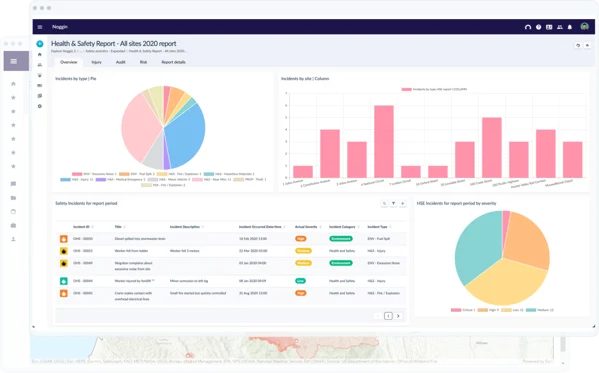In today’s dynamic world and highly regulated business environment workspace safety is not just a regulatory requirement is an important part of running a successful and sustainable business. Businesses can use effective tools to manage and improve their safety for performance. These safety softwares are known as Safety Management System(SMS)software.
In this article we will understand why safety management system software, is important and why you should invest in it.
What Is Safety Management System Software?
Safety Management System (SMS) software is a digital platform that is designed to help organisations in managing workplace health safety and complaints. This software brings together policies, procedures, responsibilities and practices into an integrated system that helps in insurance safe activities are co-ordinated and tracked efficiently.
At its core, SMS software helps organizations:
- Identify dangers
- Identify risk and control risks
- Report incidents and near-misses
- Track safety performance
This software has modules for audits, incidence reporting inspections, corrective actions training management document control risk management and many other functions. This makes it a one stop solution for safety managers, supervisors and employees.
Why Does Your Business Need SMS Software?
Enhances Workplace Safety
At the core of SMS software the goal is to prevent workplace accidents, injuries and illness. It provides a structured framework that helps in identifying hazards and managers’ risk. This software powers businesses to make a safe working environment. This software not only helps in protecting employees but it also boosts moral product activity and reputation.
Streamlines Compliance Management
Nowadays businesses face multiple National local and international safety regulations. Businesses fail to comply and it may result in hefty fines, legal liabilities and damage to their brand. SMS software helps organisations to state compliance by automating the task such as packing legal requirements, maintaining records scheduling audits and generating compliance reports. This software helps in reducing the administration and also ensures that you are always audited. ready
Improves Incident Management and Reporting
In the absence of a proper system, incidence can be inconsistent or overlooked. SMS software makes it easy in the reporting process and makes it easy for employees to report incidence near- misses and any hazards in real time through mobile apps. The system tracks the entire incident lifecycle from investigation to corrective actions. It ensures that no detail is missed and lessons are learned.
Drives Data-Driven Decision-Making
All the safety data is centralised in one flat form and it helps businesses gain valuable insights into their safety performance. SMS software provides analytics and dashboards. These functions help track and keep performance indicators, identify trends and pinpoint problem areas. This allows leaders to make good decisions allocated sources more effectively and efficiently. Hence this helps in continuously improving the safety program.
Boosts Employee Engagement and Safety Culture
Safety is not only the responsibility of Management but it’s a shared responsibility of the employees too. SMS software promotes a culture of safety by providing employee participation through easy to use reporting tools, training modules and feedback mechanisms. When an employee feels being seen and heard their concern address then they are more likely to stay engaged and committed to their workplace.
Reduces Costs and Operational Disruptions
Accidents and non compliance can be very costly in the terms of productivity reputation and employee will being rather than just financially. SMS softwares to actively manage safety risk and reduce incidence avoid costly down time or penalties. Just software can make significant cost saving and operational stability.
Conclusion
Investing in safety management system software is a smart business decision. It helps in automatic safety processes improving transparency and in empowering employees. This software helps businesses meet their legal obligations and builds proactive safety culture that drives long term success. If you want to protect your people, your reputation and your bottom line this can be the right way to explore safety management system software for your business.








